A Creative Evolution - From Traditional Chinese Silk Embroidery to Modern Chinese Silk Embroidery
Introduction
The exquisite art of silk embroidery, deeply rooted in Chinese culture for over two thousand years, has experienced a remarkable transformation in recent times. This transformation has given rise to what we now recognize as modern Chinese silk embroidery, a dynamic fusion of age-old traditions and contemporary innovations. In this article, we go over the history of Chinese embroidery by analyzing the relationship between traditional and modern Chinese silk embroidery, emphasizing their distinctions and how they draw inspiration from divergent artistic influences. Much like the contrast between traditional Chinese painting and Western oil painting, the evolution of silk embroidery reflects the ever-evolving realm of art.
Traditional Chinese Silk Embroidery
Traditional Chinese silk embroidery occupies a significant place in Chinese culture and artistry. With its roots in ancient traditions, this intricate art form has historically depicted themes from traditional Chinese paintings. These depictions often encompass elements such as nature, landscapes, folklore, and mythology. Traditional silk embroidery artists adhered to established techniques, utilizing a set repertoire of stitches which all go in a parallel way and do not criss-cross each other.
One defining characteristic of traditional Chinese silk embroidery is its emphasis on symbolism, frequently drawing from Chinese philosophy and cultural motifs. Achieving excellence in this art required immense skill, precision, and a profound understanding of China's rich artistic heritage.
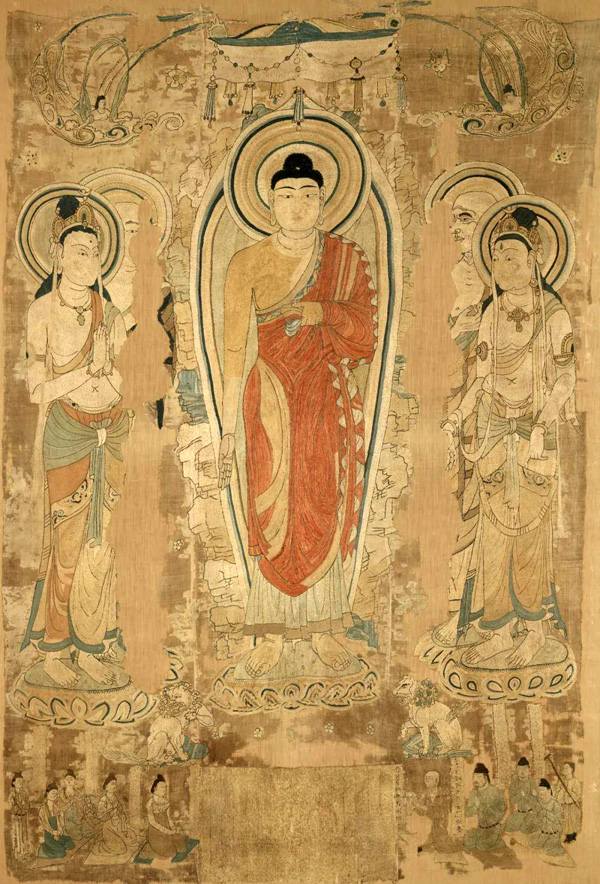

Prior to the Tang Dynasty (618 – 907), Chinese embroidery primarily served utilitarian purposes, adorning fabrics and daily essentials. The significant connection between embroidery and Chinese ink painting didn't fully emerge until the Song Dynasty (960 - 1279) and subsequent periods. The introduction of 'embroidery paintings' marked a transformative shift from the conventional realm of embroidery for practical use, intertwining it with the realm of Chinese painting.
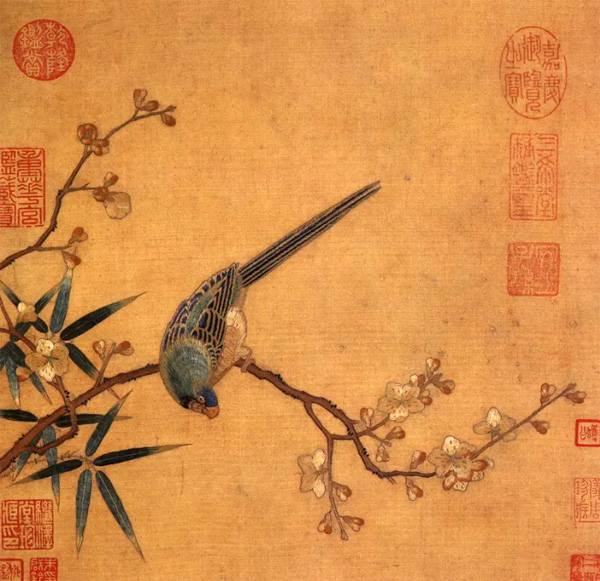

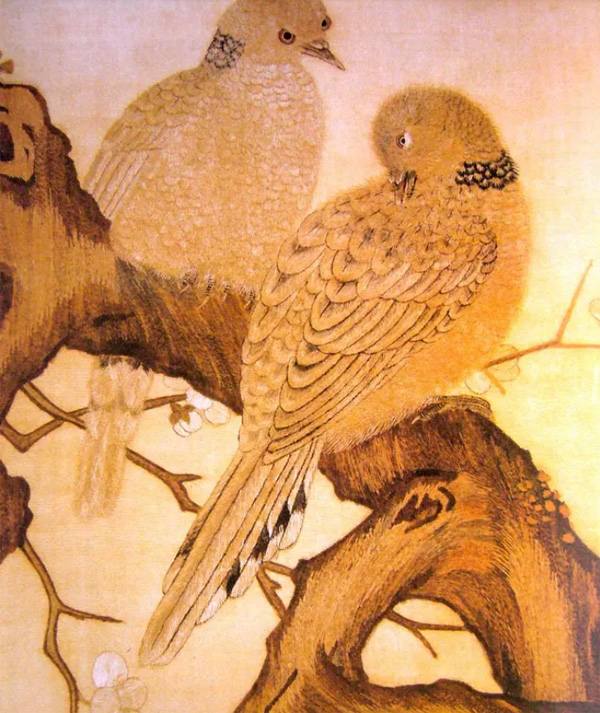

Embroidery paintings presented a noteworthy evolution in the realm of traditional Chinese embroidery, bridging the gap between this art form and the world of Chinese painting. They featured a diverse range of subjects, including themes from Buddhism, Taoism, flora, human figures, and landscapes. Notably, these subjects mirrored the themes traditionally found in Chinese paintings, marking a harmonious convergence of two prominent forms of artistic expression. The style of the traditional Chinese embroidery with stitches going in a parallel way remained the same till the end of the Qing Dynasty (1616 - 1912), lasting about 1,300 years.
Modern Chinese Silk Embroidery
In contrast, modern Chinese silk embroidery has broken free from the constraints of tradition. The driving force behind this artistic evolution can be credited to Shen Shou (1874 – 1921) and Yang Shouyu (1895 - 1981), two pioneers in the modern Chinese silk embroidery.
At the turn of the 20th century, influenced by Western art, the cultural landscape of Chinese embroidery underwent a transformative journey, steered by the pioneering spirits of two visionary artists, Shen Shou and Yang Shouyu.
Shen Shou, living in the late Qing Dynasty and the early Republican era, promoted a significant shift in the course of Chinese embroidery. Going beyond the conventional bounds of traditional embroidery, Shen Shou's revolutionary approach encompassed a bold fusion of Chinese and Western artistic principles. Her experimentation with Western painting techniques, such as perspective, lighting, and shadow, introduced a groundbreaking concept known as "simulated embroidery." Notably, her transformative works, including "Portrait of Jesus" and "Portrait of an American Actress," marked a departure from conventional themes, thereby challenging established notions of Chinese embroidery and paving the way for modern reinterpretations.
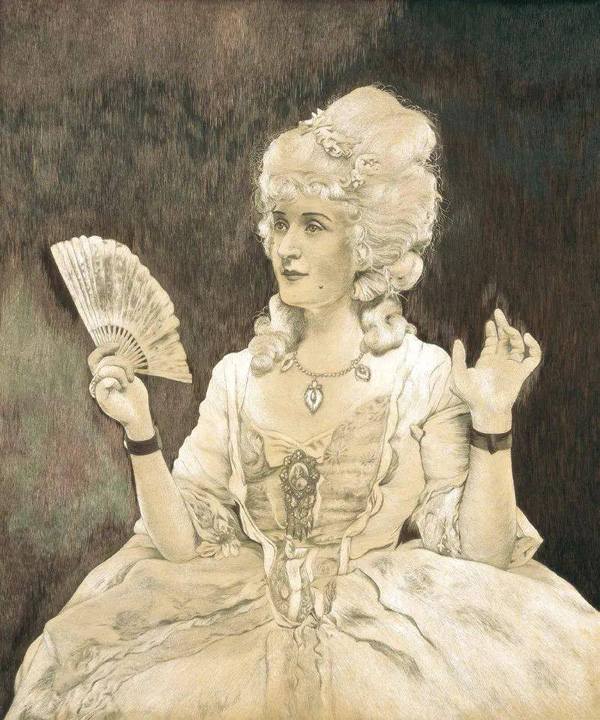

Following in Shen Shou's footsteps, Yang Shouyu emerged as a key contributor in the evolution of Chinese embroidery, carrying forward the legacy of innovation and ingenuity. Rooted in her early experiences and fortified by her education under esteemed mentors, Yang Shouyu's creative prowess became the driving force behind a new era in embroidery. By infusing traditional embroidery needlework with elements inspired by Western oil painting art, she brought a revolution in embroidery methodologies, giving birth to the revolutionary embroidery technique "random stitching”.
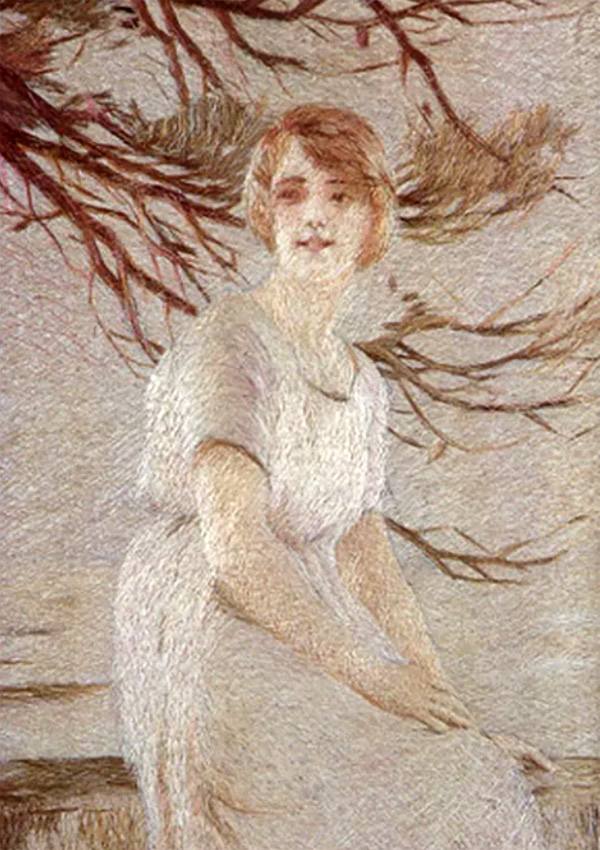

Random stitching refers to a technique used in embroidery where stitches are applied in a less structured or predictable manner, often without following a specific pattern. Unlike traditional embroidery, which typically follows predetermined designs or patterns, random stitching allows for a more improvisational approach. This technique is often associated with modern or contemporary embroidery styles, where embroidery artists seek to create a more free-flowing and organic aesthetic, often resembling the textures and forms found in paintings or other forms of visual art. Random stitching can add depth, texture, and a sense of spontaneity to embroidery pieces, allowing for more creative expression and experimentation.
Shen Shou's most significant contribution lay in her conscious departure from the traditional norms that governed Chinese silk embroidery. By expanding the thematic scope and incorporating Western artistic techniques, she laid the groundwork for a transformative shift that propelled the art form into a realm of dynamic innovation. While Shen Shou illuminated the path toward modern Chinese embroidery, it was Yang Shouyu who emerged as the torchbearer, furthering the integration of traditional Chinese embroidery with Western artistry. Emulating Shen Shou's principles, Yang Shouyu deftly synthesized elements of Chinese and Western artistic techniques, seamlessly fusing the two into a harmonious blend of creative expression.
Differences between Traditional and Modern Chinese Silk Embroidery
Subject Matter
Traditional silk embroidery predominantly portrays themes deeply rooted in Chinese culture and history, including scenes from nature, folklore, and mythology.
Modern silk embroidery explores a wider array of subject matter, ranging from adaptations of Western oil paintings to photographs and contemporary art. This versatility grants artists the freedom to explore diverse themes and styles.
Realism and Techniques
Traditional silk embroidery is characterized by meticulous details, intricate stitches, and unwavering adherence to established techniques. Its primary goal is often to convey symbolism and cultural significance. The most distinct characteristic in the techniques of traditional Chinese embroidery is that all stitches go in a parallel way.
Modern silk embroidery attains a higher degree of realism and versatility, mirroring Western oil paintings. Thanks to the random stitching technique, artists can create lifelike representations, enabling the replication of photographs and diverse artistic styles.
Artistic Approach
Traditional silk embroidery relies on adherence to conventional patterns and traditions, emphasizing precision and the mastery of specific stitches.
Modern silk embroidery champions a more innovative and freestyle approach, drawing inspiration from Western artistic techniques and embracing experimentation.
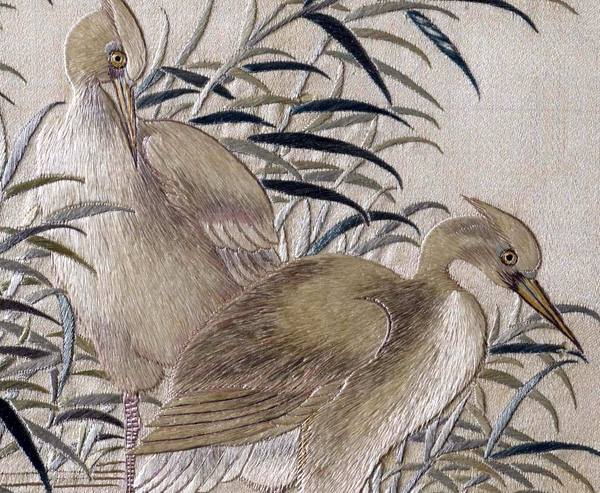

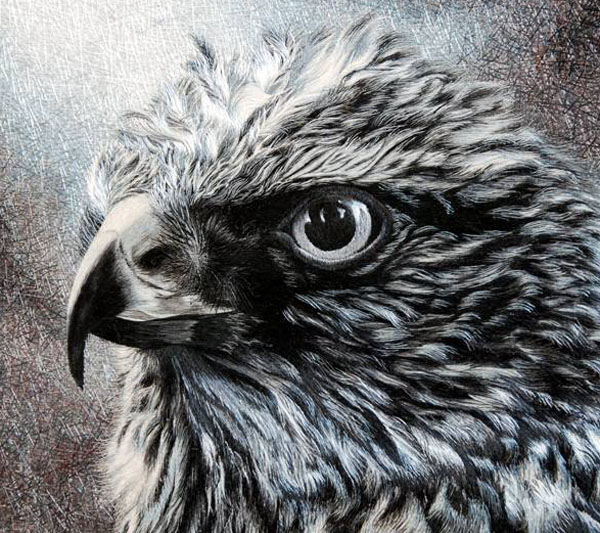

Su Embroidery Studio and Modern Silk Embroidery
In the realm of modern Chinese silk embroidery, Su Embroidery Studio has emerged as a pioneering force. Our focus is primarily on creating modern silk embroidery paintings, with an emphasis on reproducing oil paintings and photographs into realistic embroidery artworks. This shift towards modern subjects is driven by several important factors.
First, modern silk embroidery, with its broad spectrum of subject matter, is more likely to find acceptance in Western markets. Su Embroidery Studio's dedication to embracing modern themes serves as a practical method for promoting Chinese silk embroidery in Western countries, bridging the gap between cultures and traditions.
Second, modern Chinese silk embroidery acts as a symbolic bridge connecting Eastern and Western cultures. It masterfully combines the traditional Chinese art of silk embroidery with contemporary themes, achieving a harmonious blend that resonates with audiences across the globe.
Last and foremost, Su Embroidery Studio has embraced the challenge of creating silk embroidery based on photographs, particularly personal portrait photos. This approach demands the utmost level of embroidery skills. By pushing the boundaries of realism and intricacy, these works stand as a testament to the immense talent and dedication of embroidery artists. The result is nothing short of stunning and influential, captivating people's attention and raising awareness of this unique silk art form.
Su Embroidery Studio is committed to preserving ancient Chinese silk embroidery art by crafting the world's finest hand embroidery with silk thread. We hope that through our endeavors, the art of silk embroidery in Suzhou - Su embroidery, will not only survive but thrive in the modern world.

